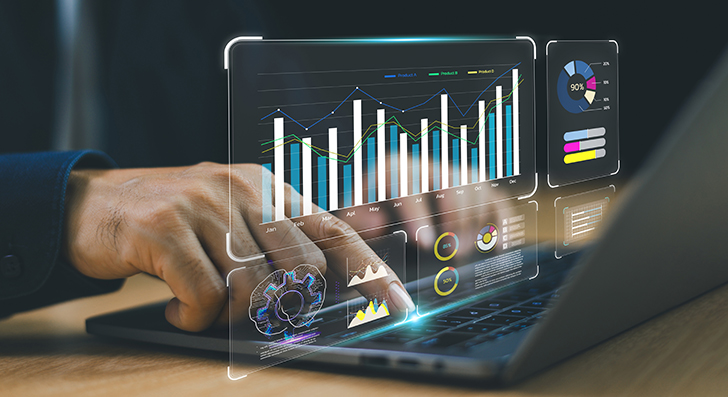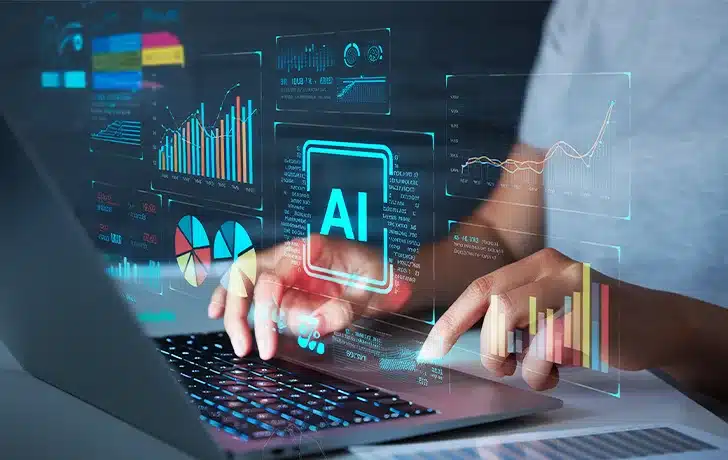From likes and shares to tweets and swipes, data is generated at a breakneck speed. Oozing out of the devices we use everyday, it shows no sign of slowing down. That said, the digital world is exploding with massive volumes of data and organizations need to collect this data to make informed decisions and map out strategies that drive profits and growth.
There were 64.2 ZB of data in 2020 in the digital universe. This figure doubled to an estimated 147 ZB in 2024.
Source: Statista
Meticulously collecting, organizing, and processing data, whether it is text, video, audio, or big data, helps generate useful business insights. However, traditional methods of collecting and processing data manually are ineffective, given the overwhelming amounts of data available. Adding to this challenge is the continually evolving legal landscape. Failing to abide by compliances can incur penalties, legal cases, and damage a brand’s reputation. This is where automated data collection solutions excel, helping businesses to properly pool and process voluminous data and eliminate non-compliance risks.
Automated Data Capture Solutions: Smarter Way to Gather Data
The data transformation solutions leverage human intelligence, automation, and new-age technologies with AI, ML, and advanced OCR to help businesses with data collection, web data capture, extraction, and formatting. These solutions are ideal to transform raw and unstructured public or private data into normalized and schema-compliant XML that facilitates analytics, data products, and AI/ML products.
In other words, these advanced solutions help organizations in gathering regulatory-compliant data with a faster TAT. Moreover, they offer agility and scalability, both of which are important for modern business to compete effectively. However, at the same time, it is important to know that each solution serves a distinct purpose, and determining the right type of solution depends on unique business needs.
Streamline Your Financial Data Collection Today—Boost Efficiency and Reduce Risks
Here are 6 automated data capture methods:
1. Optical Character Recognition
One of the proven technologies, optical character recognition (OCR) has disrupted the traditional document management approach and remains as relevant as ever.
It is the perfect solution for digitizing loads of electronic and paper documents. This technology is widely applied across industries such as healthcare, logistics, banking, finance, governing, and more. Another exciting feature of multipurpose OCR systems is that they significantly optimize data capturing costs and automate manual and repetitive tasks. Though human reviewing is required for output, especially while working with financial reports and legal documents, the OCR solution is a prerequisite to ensure effective document management.
2. Intelligent Character Recognition
Intelligent character recognition (ICR) has the potential to resolve more sophisticated challenges. Through ICR, machines are trained to process hand-written, raw documents. The levels of accuracy vary from 50% to 70%, depending on various factors including cursive handwriting, block letters, fonts, styles, etc. However, there’s room for improvement and this rate can be further enhanced by training the machine learning algorithms on varying datasets.
3. Optical Mark Recognition
Optical mark recognition (OMR) helps in capturing human-marked data, including MCQ tests, results of polls, consumer feedback, surveys, etc. The algorithm detects the location after scanning the documents and recognizes hand-written marks much faster than humans. This approach helps in completing routine tasks in a timely and resource-efficient manner; thus, accelerating the decision-making process.
4. QR Code Recognition
Have you seen how Amazon Go changed the traditional way of shopping— visitors are instructed to download the app, and the purchases are made on the check-out free store by scanning the QR code given at the entrance? This is one of the data capture methods to power the scan-and-go system.
Walmart leverages QR codes to facilitate self-servicing. The in-store registers enable the customers to scan QR codes via a mobile app in large shopping facilities.
Take another case in point, Starbucks uses QR codes to let coffee lovers learn about their favorite beverages and promote coffee roasts. Apart from the in-store locations, the QR codes are also placed on the fliers, inviting visitors to scan them and get information on coffee products or expert opinions.
With data being encrypted in QR codes, automated data capture solutions help in collecting this data. Industry leaders have already turned to this technology as a novel solution for capturing payments and merchandise data.
5. Intelligent Document Recognition
A lot of unstructured documents are generated in complex business processes, particularly in the finance and logistics industry. Intelligent document recognition facilitates data extraction from any part of the document, including tags and meta descriptions. It can also interpret tables, patterns, and content in both electronic and paper formats, identifying the start and end of documents, and sorting them according to the categories. Finally, the extracted data is stored in business apps or a database. Such solutions are most sought after as they help mitigate risks and optimize costs.
6. Voice Recognition
Voice assistants like Alexa and Siri have inbuilt natural language processing (NLP) technology. Simply say “Hey Siri” or “Alexa” to awaken the system, give the command, and Siri/Alexa is ready to answer you/follow instructions.
Numerous deep learning algorithms powered by NLP approach require huge amounts of labeled data to understand human speech, identify voice patterns, and process big data to react like humans.
Apart from the well-known areas of technology implementation like support services, security, marketing, etc., NLP can also be embedded in electronic data capture systems. These solutions help cumulate patient data or clinical trial data that can be entered via voice or manually.
Final Words
Investing in data transformation services is an efficient and financially savvy way to collect and process data with little to no human involvement. Though automated data collection and capture solutions aren’t perfect, they are continually improving and gradually reaching the next level. These advanced solutions are apt for capturing regulatory compliant data, improving accuracy, and optimizing costs.
Irrespective of the industries, you must adopt an efficient way of gathering and processing the sheer volume and variety of data. These data collection solutions meet niche-specific requirements within the stipulated time and budget, offering businesses an upper hand in making informed decisions and staying competitive in the industry.






